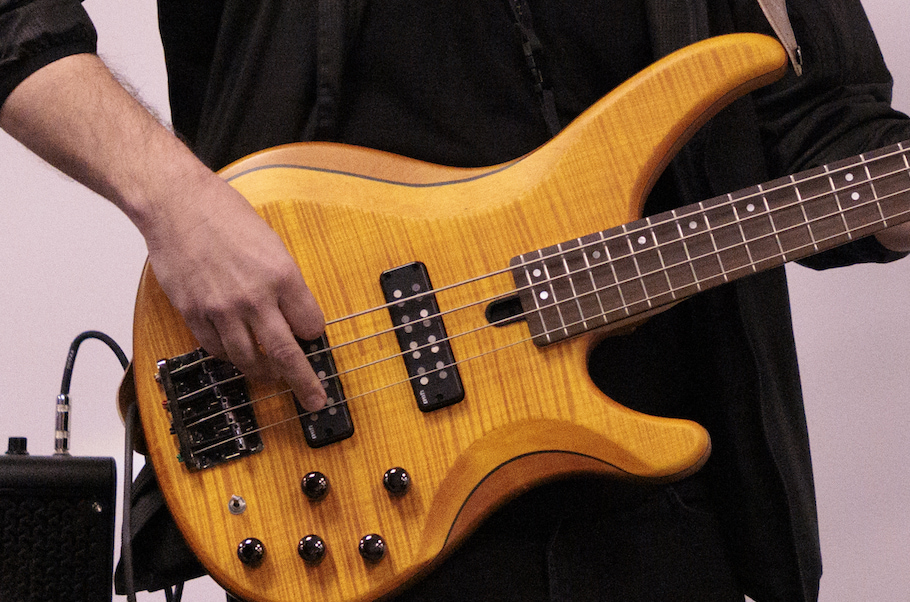The Art of Bass Fills
How to add the right embellishments in the right place and at the right time.
When I was little, I fantasized about being an adult so that I could eat dessert whenever I wanted. Now that I’m a grown-up, I’ve realized that a hunk of chocolate cake and a bowl of ice cream is far more satisfying after a regular diet of grains, veggies, fruit, salad and lots of water. If I happen to sneak a cookie or a fig bar, it’s not the end of the world, but letting loose after being disciplined is the sweetest reward of all.
Bass fills, those fun little deviations from the bass lines we’re expected to play, are like dessert. We love them, but they’re not meant to be the main course, and they sound sweetest after we’ve taken care of business by nailing the essentials.
RIGHT PLACE, RIGHT TIME
When, you may ask, is the best time to do rock a bass fill? It depends on the style of music, the occasion, and your technical facility. Pre-arranged bass breaks and solo features are the perfect places to throw down, of course, and fills also often work well during transitions to new sections. However, depending on the context and how well you know the material, you can sneak them in pretty much whenever it feels right. Personally, I tend to consider adding fills every two bars and every four bars, and I’ve trained myself to look for gaps where I won’t clash with the vocals. One of the great pleasures of playing bass is choosing whether to stay steady, lay out, or join the drummer for fills (and hope they don’t slow down or speed up during those moments).
At the risk of stating the obvious, listening and responding are at the heart of what we do. With that in mind, check out the old-school groove in the audio clip below. Notice the lead and background vocals, the interplay between the piano and guitar, and the steady groove of the tambourine, as well as the multiple overlapping sax parts in the second half of the song. Before you even pick up your bass, think of how you might join the party and support what’s happening.
Your first pass might sound something like this next audio clip. It’s a hodgepodge of ideas — some worth developing, some perhaps not — but the bass totally takes over the track without respect for the vocals. If you think this sounds like a disconnected, embryonic bass solo, you’d be right, and these riffs would sound so much better in an actual bass solo slot. Nonetheless, trying out ideas like this is a good way to warm up, get loose, and consider how you’d like to approach the part.
As you can hear in this next clip, adding drums provides rhythmic context and makes it easier for you to be disciplined in your bass parts. Here, I’m playing fills in every other bar, but it works because the bass line feels anchored in the groove. Notice too how the fills get bolder after the vocals are out of the picture, as we head toward the end of the track.
Some of history’s baddest bass fills happen on outros and fadeouts — for example, check out Paul McCartney’s inspired riff at the very end of The Beatles’ “Come Together” (about 4:05 into the song), Anthony Jackson’s playing at around the 3:27 mark of Chaka Khan’s “Move Me No Mountain” or Marcus Miller’s licks in the outro to his “The Sun Don’t Lie.”
Do we need fills for a track to feel good? There’s plenty of evidence to the contrary. Inspired by dancefloor classics that keep the bass simple and steady (such as, for example, in the Masters At Work remix of Dua Lipa’s “Pretty Please”), the groove in the clip below lends itself to a syncopated, trance-like bass part with only the slightest fluctuation. Not outlining the chord changes won’t always work, but it’s worth exploring, especially if it contrasts another part of the song that’s busier, as demonstrated in the audio clip below.
This final audio clip presents a way to lock in with the drummer, use fills to outline sections, and increase excitement. The bass part is married to the kick drum while staying out of the singer’s way, and the longer notes and walking bass style underneath the sax solo set us up to the end of the track and the drummer’s final fill.
GET YOUR FILL
In some contexts, too much of a good thing can be wonderful, but when it comes to bass fills, less really is more. Some players are so fill-happy that it’s hard to tell when they’re soloing, but there’s nothing quite like hearing a solid, dependable bass player surprise everyone with a jaw-dropping fill out of nowhere before smoothly returning to hold down the fort.
That said, some styles of music demand more fills. For example, an up-tempo hard rock gig where you’ll be doubling the guitar will have many more opportunities for fills than a dub reggae show. There are great players who sound like they never play the same thing twice, but in many cases, it’s because they expertly walk the line between laying down the backbone of a song while infusing the moment with energy and fresh ideas.
In your practice sessions, consider taking control from restless fingers, listening to what you hear in your head, and developing the confidence and technique to play it. Look ahead to places in a song where a fill adds just the right spice. In the studio, a producer may have you do several takes — one with a solid line that does the job, and then a few variations that get increasingly free — so they can sprinkle fills throughout the track. Onstage, use your best judgment. It never hurts to minimize fills and keep things grounded (a big part of our job), but feel the energy and run with it. In most contexts, dropping a tasty flash of thunder in just the right place after keeping things simple has the most impact, like a scoop of ice cream on a hot summer’s day.















